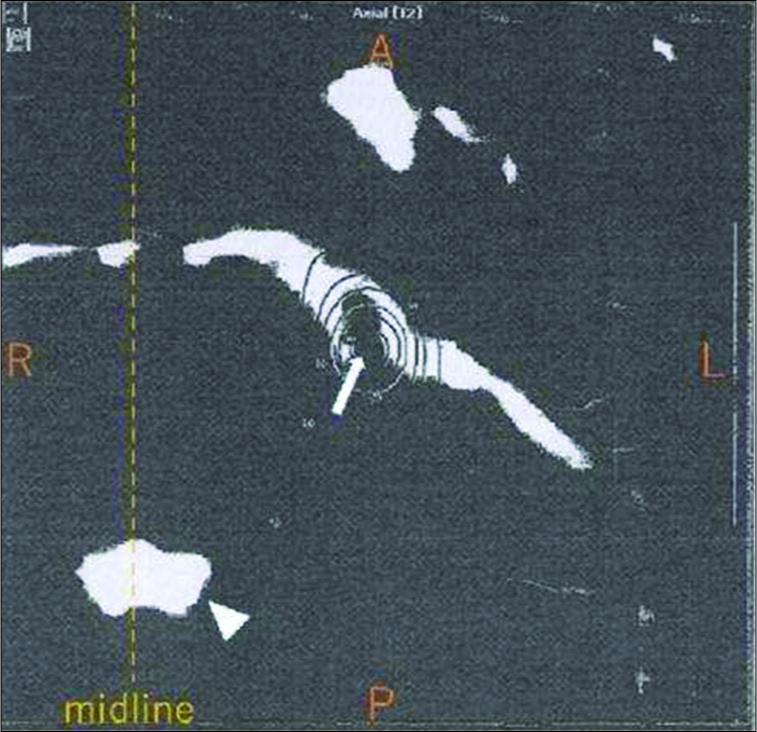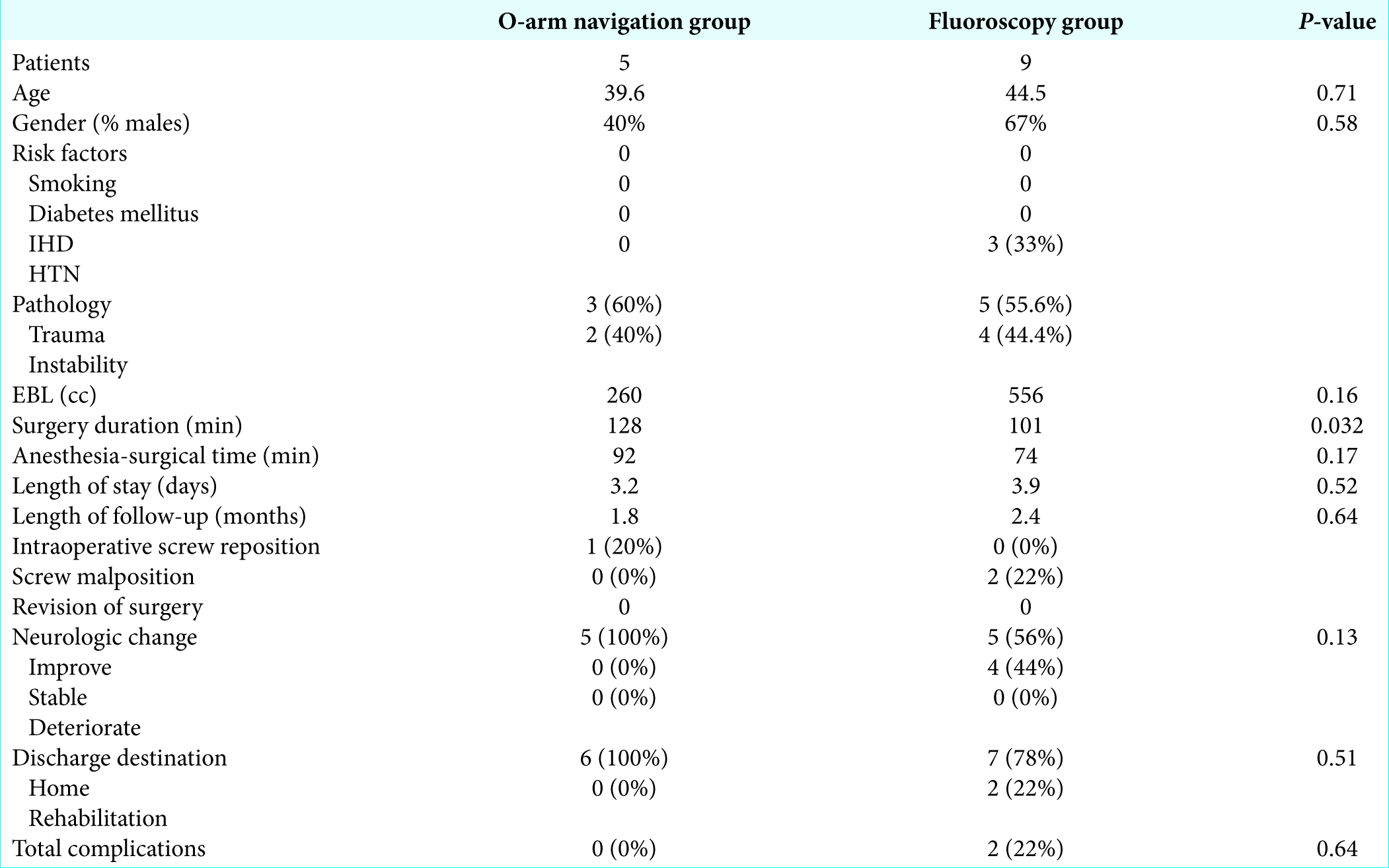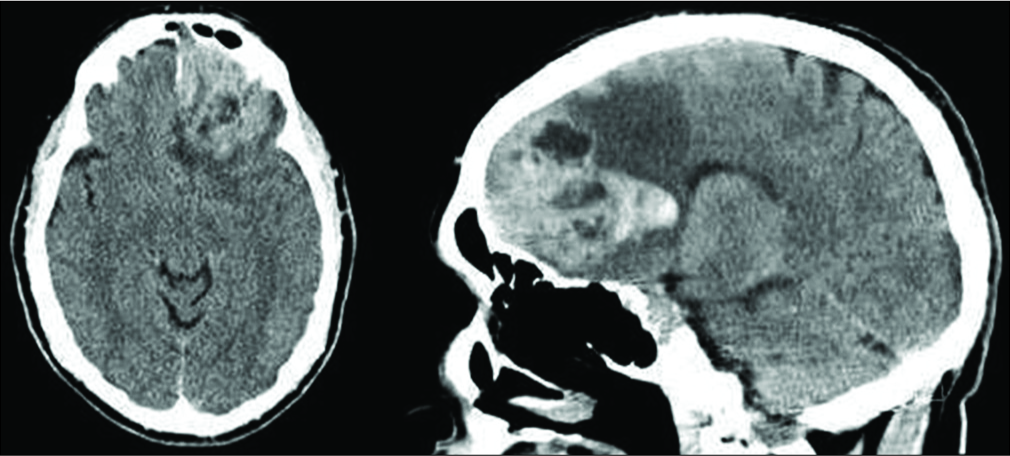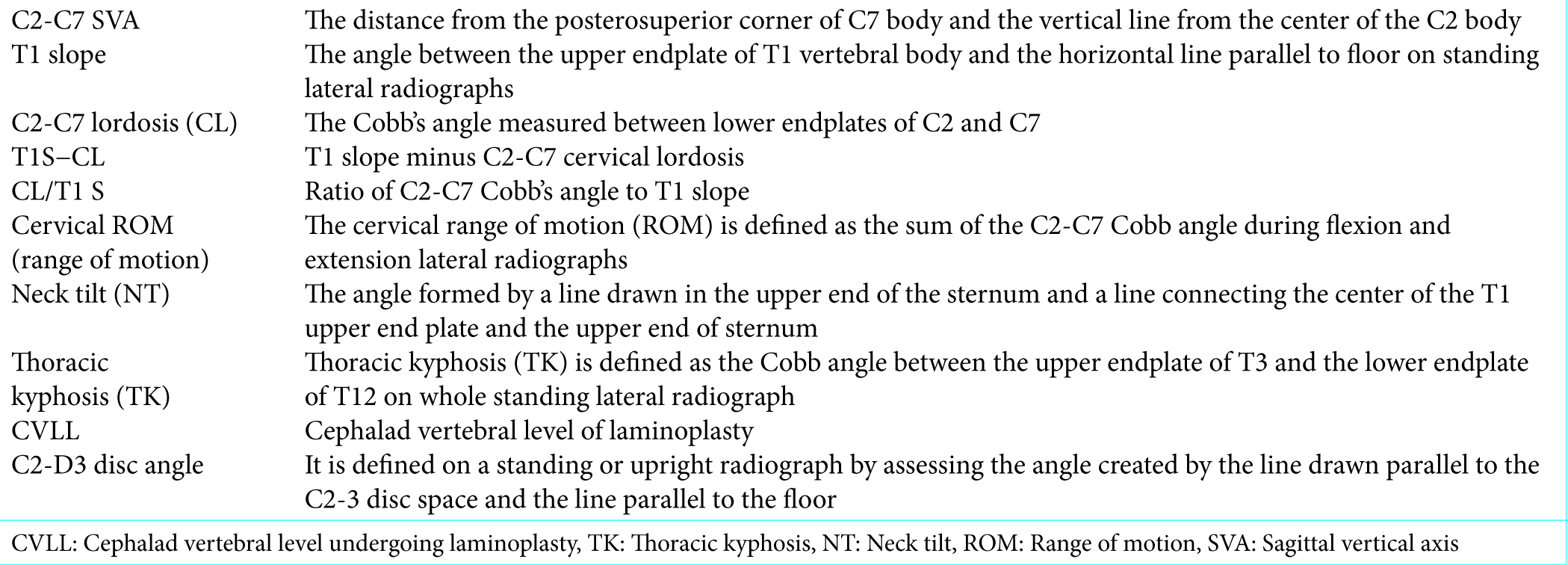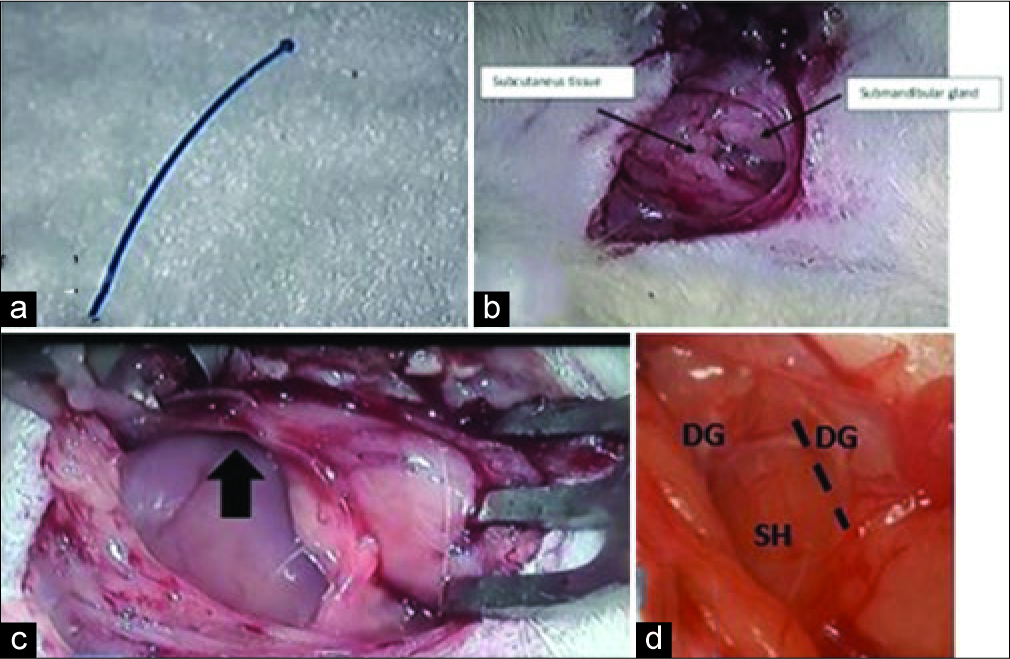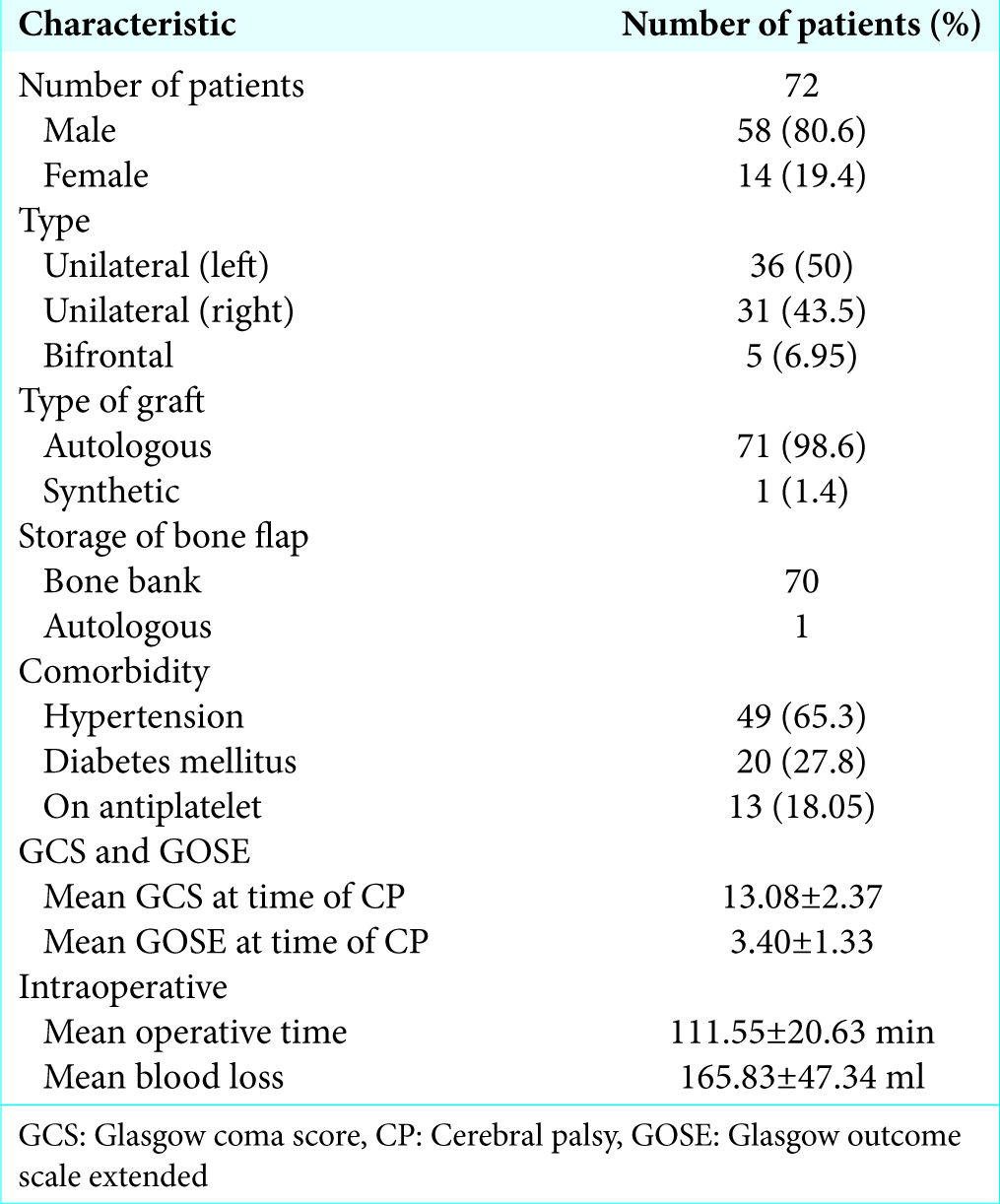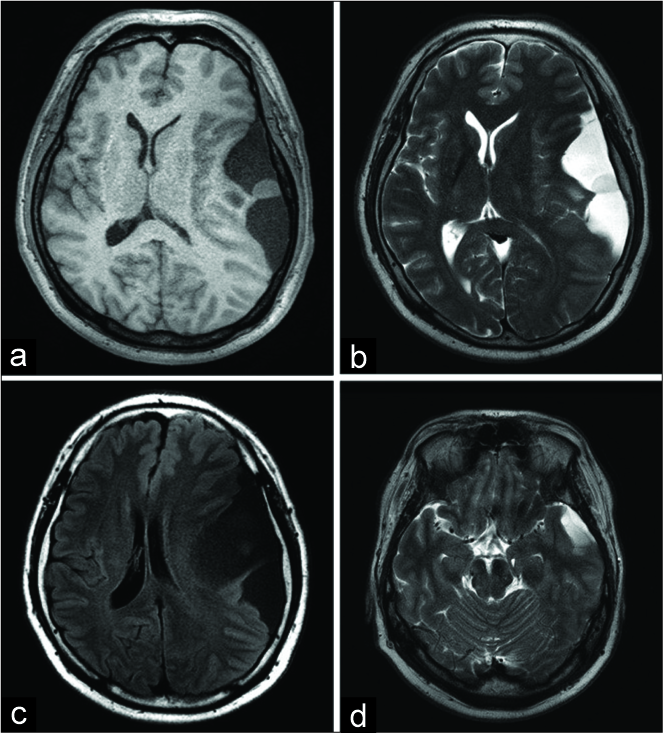Gamma knife surgery-induced aneurysm rupture associated with tissue plasminogen activator injection: A case report and literature review
Date of publication: 26-Jul-2019
Background: Cases involving delayed development of intracranial aneurysms related to gamma knife surgery (GKS) have been recently reported. Here, we present a rare case of GKS-induced aneurysm rupture after intravenous injection of tissue plasminogen activator (t-PA) for occlusion of the middle cerebral artery (MCA). To the best of our knowledge, this is the first case in which t-PA-induced rupture of a GKS-related unruptured aneurysm.
Intraoperative imaging and navigation for C1-C2 posterior fusion
Date of publication: 26-Jul-2019
Background: Cervical axial spine fusion is challenging as the anatomy is extremely variable, and screw misplacement can lead to severe complications. C1 lateral mass screws and C2 pedicle screws are routinely placed under either fluoroscopic guidance or imaging-assisted navigation. Here, we compared the two for axial screw placement.
Intracranial anaplastic hemangiopericytoma presenting with simultaneous extra-cranial metastases: A case report and review of the literature
Date of publication: 26-Jul-2019
Background: Intracranial solitary fibrous tumor/hemangiopericytoma (SFT/HPC) is a rare mesenchymal tumor with a propensity to recur and metastasize extracranially years after treatment. Accordingly, there are no reported cases of a patient presenting with a simultaneous intracranial primary and extracranial metastases. We present the case of a patient presenting with an intracranial SFT/HPC and simultaneous liver metastases and propose a treatment paradigm.
Which factors predict the loss of cervical lordosis following cervical laminoplasty? A review of various indices and their clinical implications
Date of publication: 26-Jul-2019
Background: Many patients undergoing laminoplasty develop postoperative loss of cervical lordosis or kyphotic alignment of cervical spine despite sufficient preoperative lordosis. This results in poor surgical outcomes.
Penetrating spinal cord injury: A case report and literature review
Date of publication: 26-Jul-2019
Background: Penetrating spinal cord injury (pSCI) is uncommon in civilian settings. However, there is a lack of consensus regarding perioperative management and thresholds for operative intervention. This review explores the various trends in the management of pSCI along with a literature review.
The devastating Venezuelan crisis
Date of publication: 26-Jul-2019
Abstract
The Venezuelan crisis is filling the headlines and truly deserves the world’s attention. It is a wake-up call to all as it holds relevant lessons for both developing and developed countries. The country suffers a severe humanitarian crisis. Its economy has declined at a faster pace than any other peacetime economy worldwide. Hardship and repression have led millions to flee the country creating a refugee crisis in Colombia and other neighboring countries, and millions more are expected to flee unless conditions improve. It raises serious security concerns in the whole Western Hemisphere. The country of Venezuela sits on and owns the largest oil reserves in the world. Oil helps explain the “rent-seeking” behavior that is at the root of this crisis. (“Rent-seeking” is simply getting money from the government for the oil it sells and giving little or nothing back to the government in return. -EEd) However, oil cannot be blamed for this crisis – it helped Venezuela get out of the poverty trap and become a modern democratic society in the 20th century. This crisis comes from the perverse combination of bad politics, bad policy, and corruption that besieged the country over the last 20 years. Since he was elected in 1998, Hugo Chávez paved the way to authoritarianism while making the economy more vulnerable to the ups and downs of oil prices. Chávez died in early 2013. When Nicolás Maduro, his anointed heir, was elected to succeed him, the economy was in bad shape and institutions were already weak, but problems had been papered over thanks to high oil prices and the money the government made from its sale. When oil prices were high worldwide, Venezuelan governments did not save money for possible future economic losses. When oil prices began falling in 2014 and threatened the money from “rent-seeking” by many Venezuelans, Maduro chose the road to overt authoritarianism instead of seeking to restore the basics of an open society and a prosperous economy: the rule of law, property rights, transparency, prudent fiscal and monetary policy, and essential public goods such as education, health, housing, transportation, and infrastructure. This paper is a brief history of how the present Crisis in Venezuela developed and how it can be reasonably resolved. The Venezuelan people are suffering. There are lessons here for everyone in the world (A Venezuelan and James Ausman).
The AANS suspends Editor-in-Chief, Nancy Epstein, for telling the truth about spine surgery
Date of publication: 19-Jul-2019
Technical report: Simple method of animal stroke model of luminal occlusion of middle cerebral artery in Indonesia
Date of publication: 19-Jul-2019
Background: Although there are many experimental studies describing the suture method of middle cerebral artery occlusion (MCAO) in rats, this is still a new procedure in Indonesia and the techniques for applying this stroke model in animal research are not well known. There has been a perception in Indonesian scientific community that the technique would be difficult and require advanced equipment. The aim of this study is to demonstrate that it is possible to perform the technique with minimal resources using simple method and basic surgical loupe equipment.
Cranioplasty following decompressive craniectomy – Analysis of complication rates and neurological outcomes: A single center study
Date of publication: 19-Jul-2019
Background: Cranioplasty is the surgical intervention to repair cranial defects in both cosmetic and functional ways. Despite the fact that cranioplasty is a simple procedure, it is still associated with a relatively high complication rate, ranging between series from 12% to 50%.
Resection of a lateral supratentorial endodermal cyst complicated by postoperative seizures: A case report
Date of publication: 19-Jul-2019
Background: Endodermal cysts are uncommon cystic lesions usually located at the ventral aspects of the spine. A lateral supratentorial location of such cysts is extremely rare. A unique case of a lateral supratentorial endodermal cyst that required surgical intervention due to uncal herniation, complicated with postoperative seizures, is presented.


